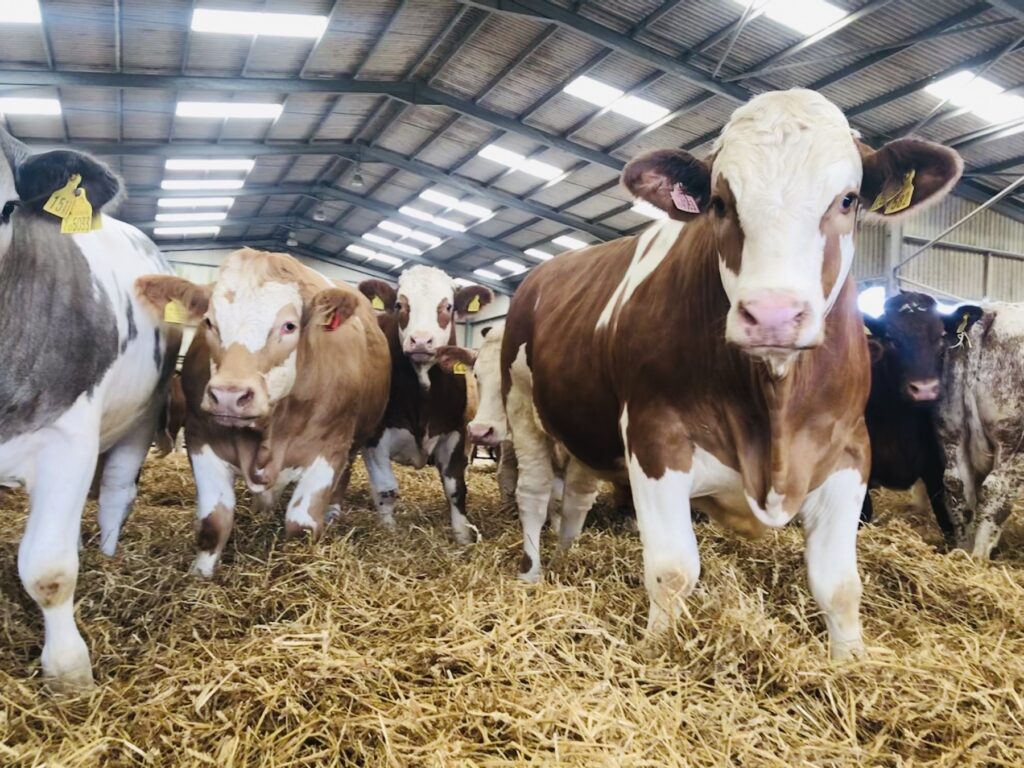Healthy rumen, healthy profits
30th October 2023
As the weather turns, stock is being housed and winter rations formulated. Extra attention should be given to a smooth transition to reduce the risk of acidosis and the associated poor performance, experts say.

Rumen acidosis occurs when the pH of the rumen becomes acidic. The change in pH can result in some rumen microbes dying off, impaired rumen function and performance dropping. In severe cases, liver abscesses can form, and animals may die.
“When talking about acidosis in cattle, we are talking about the excess production of acid within the rumen,” says Howard Kellock, managing director of Fakenham Farm and Equine veterinary practice.
This can occur by feeding too much of something, like cereal or compound feed. From his experience, Howard tends to see more cases of acidosis in cattle fed high-energy rations. This is because it drops the rumen pH more regularly. Any animal fed a well-managed total mixed ration (TMR) tends to suffer less from acidosis effects.
How to prevent acidosis
Farmers can protect against acidosis by providing plenty of fibre. Fibre will encourage more cudding and, in turn, saliva production. Howard believes saliva production is critical because this is where all of the natural acid buffer produced by the cattle is from.
“Most commonly, acidosis is subtle and not obvious at first. The primary way to judge this is on dung consistency, which tends to be less solid the more severe the acidosis. The knock-on effect of these symptoms is a loss of production. For dairy cows, this is a loss of milk production; for growing or finishing animals, it is a loss of daily live-weight gain or poor feed conversion efficiency,” says Howard.
“Using high lactic acid silage, feeding high levels of cereals, and new season grain are all risk factors for acidosis,” says Jill Hunter, beef and sheep nutritionist for animal nutrition provider Harbro. “This could be seasonal, such as the switch to freshly harvested grain, or when they switch from growing to finishing rations.
“Prevention is always better than the cure. We know ruminants evolved to graze hills and long-stemmy forages, not to stand in a shed and eat ad-lib cereal. It is about returning to basics and ensuring the rumen environment is right, so animals can really get the most out of what we feed them.”
Farmers can mitigate acidosis risk by altering some management practices. Ensuring the silage’s chop length is correct and the structural fibre in rations can help. Jill advises transitioning to a finishing ration should last two to three weeks; any shorter, the risk of acidosis significantly increases.
Nucleus research farms
Harbro has been conducting trials using its unique rumen buffer Alkacid to optimise rumen health on its Nucleus beef research farm in North East Scotland. It is one of a pair of farms run by Harbro to conduct practical research, providing information to aid its advice to farmers. The other farm focuses on dairy cow research.
Alkacid combines rumen buffers, essential oils and natural hot spices in a honeycomb structure, which Jill claims will absorb 20% more acid than bicarbonate. The rumen buffers work immediately and for 24 hours. These are supported by the essential oils inhibiting starch-digesting rumen microbes and hot spices, increasing water intake and promoting saliva production.
“Scientific research is at the heart of our research and development programme, which is why we have close links with Glasgow Vet School. The Nucleus research farms aim to impart commercial reality into our research work; a great balance between science and farming reality.
“They are set up to replicate a finishing unit typical of many customers, meaning our findings are highly applicable when we discuss them with farmers,” explains Jill.
Rumen buffer trials
For the Alkacid trial, cattle were a typical mix of continental and native breeds, bought from auction markets throughout Scotland. Once they arrived on the farm, cattle were fed Harbro Beefstock nuts as a transition feed. This is gradually phased out and replaced with ad-lib barley, which has been processed using one of Harbro SuperBruiser machines.
The cattle were divided into four pens, with two receiving Alkacid with their feed ration. This provided two replicates in the trial and a more robust dataset. They were finished and sent to the processor within 100 days of arriving at the farm.
“We were astonished by the results. The cattle fed Alkacid in their rations gained, on average, 350g per head per day more throughout the transition period than those that did not. This gain is attributed to the cattle transitioning better, which led to improved rumen health and utilisation of their ration.
“By transitioning and finishing quicker using Alkacid, the cattle are on-farm for fewer days. This leads to an increase in profitability and a decrease in the carbon footprint. If a farmer can get cattle off their farm quicker, they can increase their business throughput by finishing more cattle in a year.
“When combined with thorough herd management, adding Alkacid to a feed ration is an easy choice when looking at our results,” concludes Jill.
